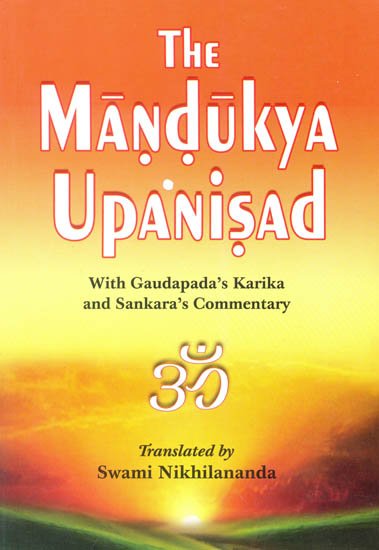Mandukya Upanishad (Gaudapa Karika and Shankara Bhashya)
by Swami Nikhilananda | 1949 | 115,575 words | ISBN-13: 9788175050228
This is verse 2.16 of the Mandukya Karika English translation, including commentaries by Gaudapada (Karika), Shankara (Bhashya) and a glossary by Anandagiri (Tika). Alternate transliteration: Māṇḍūkya-upaniṣad 2.16, Gauḍapāda Kārikā, Śaṅkara Bhāṣya, Ānandagiri Ṭīkā.
Mandukya Karika, verse 2.16
Sanskrit text, IAST transliteration and English translation
जीवं कल्पयते पूर्वं वचो भावान्पृथग्विधान् ।
बाह्यानाध्यात्मिकांश्चैव यथाविद्यस्तथास्मृतिः ॥ १६ ॥jīvaṃ kalpayate pūrvaṃ vaco bhāvānpṛthagvidhān |
bāhyānādhyātmikāṃścaiva yathāvidyastathāsmṛtiḥ || 16 ||16. First of all, is imagined the Jīva (the embodied being) and then are imagined the various entities, objective and subjective, that are perceived. As is (one’s) knowledge so is (one’s) memory of it.
Shankara Bhashya (commentary)
What is the source of the imagination of various objects, subjective1 and objective2 that are perceived and appear to be related to one another as cause and effect? It is thus explained:—The Jīva is of the nature of cause and effect and is further characterised by such ideas as “I do this, I am happy and miserable.” Such Jīva is, at first, imagined3 in the Ātman 4 which is pure and devoid of any such characteristics, like5 the imagination of a snake in a rope. Then for the knowledge of the Jīva are imagined6 various existent entities, both subjective and objective, such as Prāṇa, etc., constituting different ideas such as the agent, action and the result (of action). What is the cause of this imagination? It is thus explained:—It, the Jīva, who is the product of imagination and competent to effect further imagination, has its memory determined by its own inherent knowledge. That is to say, its knowledge is always followed by a memory, similar to that knowledge. Hence,7 from the knowledge of the idea of cause results the knowledge of the idea of the effect. Then follows.the memory of both cause and effect. This memory is followed by its knowledge which results in the various states of knowledge characterised by action, actor and the effect. These are followed by their memory, which, in its turn, is followed by the states of knowledge. In this way are imagined various objects, subjective and objective, which are perceived and seen to be related to one another as cause and effect.
Anandagiri Tika (glossary)
1 Subjective—Such as, pain and pleasure, knowledge, attachment, etc.
2 Objective—such as, various objects perceived outside of us. These objects appear to cause various subjective feelings in us, which, in their turn, seem to create external objects. Therefore, subjective and objective entities appear to be mutually related as cause and effect.
8 Imagined— The Ātman itself imagines the idea of a Jīva through the power of Māyā.
4 Ātman—Ātman, pure and unrelated, appears as the substratum of all ideas.
5 Like, etc.—No illusory superimposition is possible without a real substratum. This is the reply to the Buddhistic nihilism.
6 Imagined—That is to say, by the Jīva itself through the power of Māyā which is postulated from the causal standpoint.
7 Hence, etc.—It is seen from common experience that the idea of food and drink is followed by the idea of satisfaction. One is not possible in the absence of the other. Following this method of agreement and difference we imagine thus. From the idea of knowledge of food, etc., which is the cause, follows the idea of the knowledge of satisfaction which is the effect. Next day, we get the memory of this cause and effect experienced on the previous-day. Then we have the idea of a duty which may be described as a result of the previous experience. Accordingly we begin the act of cooking, etc., with the help of rice, fuel, etc. After eating the food thus prepared, we derive certain definite states of knowledge characterised by the idea of satisfaction, etc. This satisfaction inheres in us as the memory which stimulates us, next day, to similar action. We perform the action which is followed by an identical result. Thus ideas succeed one another and appear to-be related as cause and effect. That these ideas need not have any counterpart in the gross physical world of the waking state can be understood by the analysis of the dream experiences. As a matter of fact, it cannot be rationally proved that even, in the waking state, an idea can produce a corresponding effect in the world perceived to exist outside of us.
